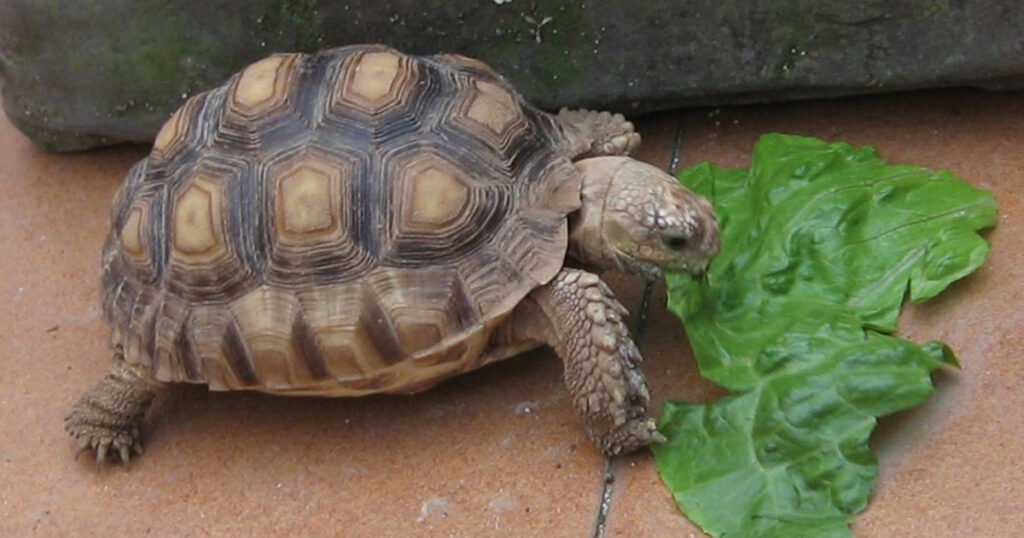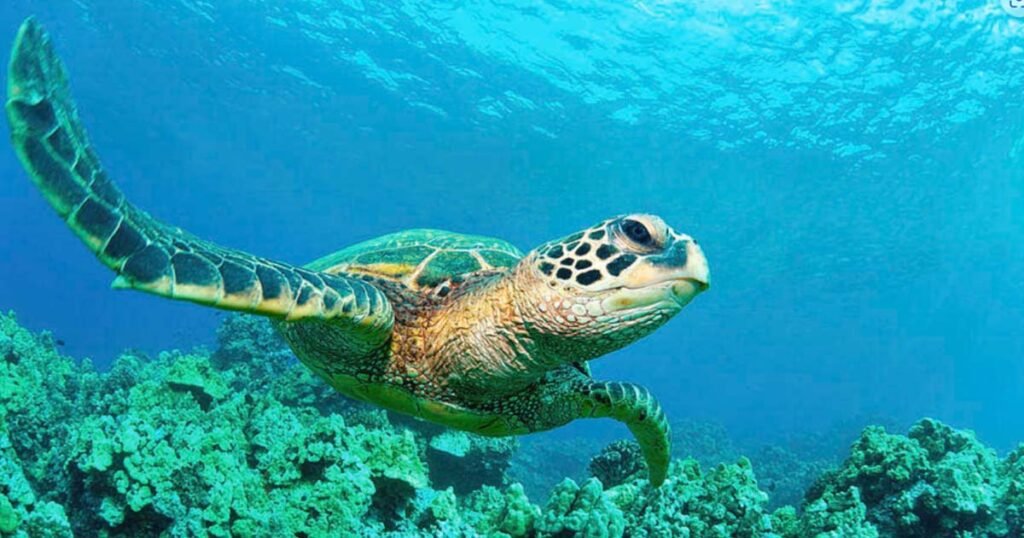Curious about turtles’ dietary habits as a new turtle owner? Wondering, “Are turtles herbivores, carnivores, or omnivores?” You can’t just get this answer with one. It depends on several criteria. A turtle can either be a carnivore, an omnivore, or a herbivore at the same time. Turtles come in various shapes, sizes, and species, each with its unique diet. Some munch on plants, while others prefer meat. While some turtles indeed enjoy leafy feasts, others have a more varied menu.
In this article, we’ll explore turtle dietary preferences, focusing on whether they are herbivores. Getting to know their dietary habits gives a turtle owner a better understanding of their behavior and environment. Let’s find out turtles’ herbivorous tendencies and see what diverse diets they eat!
Table of Contents
What Are Herbivores?
Herbivores are animals that primarily feed on plants and vegetation. Unlike carnivores, which eat meat, and omnivores, which consume both plants and animals, herbivores rely solely on plant-based diets for sustenance. These creatures have specialized digestive systems adapted to break down cellulose.The main component of plant cell walls, into nutrients that they can absorb and utilize.
Examples of herbivores include turtles, cows, deer, rabbits, and elephants. They play a crucial role in ecosystems by regulating plant growth, dispersing seeds, and serving as prey for carnivorous animals. It’s crucial to understand herbivores if you want to understand food chains, ecological balance, and life in various habitats.
Are Turtles Herbivores?

Yes, a turtle or a tortoise can be herbivores, but it’s important to note that not all turtle species follow a herbivorous diet. Turtles, much like humans, exhibit a diverse range of dietary preferences. While some species primarily consume plant matter, others may eat insects, small fish, or even carrion into their diets. Turtles’ diets vary based on their habitat, their behavior, and their evolution.
Herbivorous Turtles – An Overview
Turtles exhibit diverse dietary habits depending on their species and environment. While some turtles are herbivores, consuming primarily plant matter, others are omnivores or carnivores, that eat a combination of plants and animals.
Herbivorous Aquatic Turtles
Herbivorous turtles, such as the green sea turtle, feed on algae, sea grasses, and other aquatic vegetation. They use their beaks to shear or scrape vegetation, facilitating digestion in their specialized digestive tracts.
Herbivorous Land Turtles
Land-dwelling herbivorous turtles, like the tortoise, also feed on a variety of plants, including grass, leaves, flowers, and fruits. Their beaks are adapted for biting and chewing vegetation, enabling them to extract nutrients efficiently.
Ecological Importance of Being Herbivores
Herbivorous diets provide essential nutrients such as carbohydrates, fiber, vitamins, and minerals necessary for turtles’ growth, development, and overall health. Herbivorous turtles play crucial roles in their ecosystems by contributing to nutrient cycling, seed dispersal, and vegetation management.
Which Turtle Species are Herbivores?

Many turtle species are herbivores, which means most of their food comes from plants. Among these are the red-eared slider, painted turtle, and musk turtle. Above we have also mentioned aquatic turtles like green sea turtles are also herbivores. While the box turtle is also considered a herbivore, it occasionally supplements its diet with insects or small animals. Their diet includes fibrous leafy greens like:
- Kale
- Collard greens
- Spinach
- Dandelion leaves
- Romaine lettuce is a source of essential fiber
These turtles possess robust jaws capable of crushing plant matter and elongated claws suited to digging roots and tubers. Additionally, occasional treats such as fruits can diversify their diet and provide additional nutrients.
Comparing Turtle Digestive Efficiency
The University of Chicago Press Journal published a study comparing the digestion performances of two freshwater turtles: an herbivore and an omnivore. The study aimed to determine if herbivorous turtles have greater digestive efficiency than omnivorous turtles when consuming plant-based diets.
Diet Types
The turtles were fed two types of aquatic plants: hydrilla (Hydrilla Verticillata) and duckweed (Spirodela Polyrhiza). These plants differ in their nutritional compositions and levels of microbial degradation during digestion.
Nutritional Gain
Results showed that when consuming hydrilla, the herbivorous turtle gained significantly more nutrition from the diet daily. This was due to higher intake and faster digestive processing compared to the omnivorous turtle.
Digestive Efficiency
Interestingly, when both turtle species were fed duckweed, their digestive performances were similar. Despite being a herbivore, the herbivorous turtle did not consistently outperform the omnivore. It had greater digestive efficiency on a diet extensively fermented like hydrilla, but no nutritional advantage on a diet with limited microbial degradation like duckweed.
Implications
These findings challenge the assumption that herbivorous turtles always have higher digestive efficiency on plant diets compared to omnivorous turtles. The study highlights the importance of diet composition and microbial degradation processes in determining turtle digestive capabilities.
What Should Be Herbivorous Reptile Diets?
Herbivorous reptiles, like turtles, have specific dietary needs crucial to their health. These reptiles consume plant-based foods, such as vegetables and greens, which provide essential nutrients like fiber, vitamins, and minerals, as we mentioned earlier.
Balanced Diet Requirements: A balanced herbivore reptile diet should consist of high-fiber vegetables, be rich in calcium, vitamins A, and D3, and maintain an appropriate calcium-to-phosphorus ratio. Additionally, it should have low levels of fats, oils, proteins, and certain compounds like thiocyanates, oxalates, and phytates.
Optimal Nutrition Sources: Wild plants, including flowers, pastures, and weeds, serve as optimal nutrition sources for herbivorous turtles, offering natural forages rich in essential nutrients. These plants should be free from pesticides and pests to ensure reptile health.
Food Preferences and Selective Feeding: Turtles often have food preferences, consuming only one or two types of food while avoiding others. This selective feeding behavior can lead to nutritional deficiencies. To address this, it’s recommended to liquefy the food and supplement it with vitamins and minerals, promoting a more balanced diet.
Importance of Fresh and Raw Foods: Fresh and raw foods are essential for herbivorous reptiles, ensuring they receive the highest nutritional value from their diet. Washing food thoroughly is crucial to remove pesticide residues, and safeguarding reptile health and well-being.
Dietary Supplements
Supplementing the diet with vitamins and minerals, such as Vitafort-A and Calciosol with a fixing agent. It can help herbivorous reptiles receive all necessary nutrients for optimal health. These supplements compensate for diet deficiencies and support the overall health of herbivore turtles.
Some turtle species benefit from grazing (encouraging turtle eating patterns) behavior. Where they can naturally eat suitable vegetation if provided with adequate space. The grazing helps mimic their natural feeding habit and provides additional enrichment.
Are Sea Turtles Herbivores?

Yes. Many sea turtles are herbivores like green sea turtles. They munch on sea grasses and algae, commonly found in shallow coastal waters. However, it’s important to note that not all sea turtles are herbivores. Some species are omnivores, meaning they eat both plants and animals. These omnivorous sea turtles have a varied diet that includes jellyfish, mollusks, crustaceans, and even plant materials like seaweed. So, while many sea turtles are herbivores, there’s diversity among different species in their dietary preferences.
FAQ
Are turtles carnivores herbivores or omnivores?
A turtle can have any food habit including carnivores, omnivores, and herbivores. Carnivore’s food habit includes eating meaty or fleshy food. Omnivore turtles feast on both meat and vegetables or fruits. Herbivore turtles only eat plant-based food. Most of the turtle species follow carnivore’s food habits when they are juvenile. As they grow up they become used to both vegetables and meat.
Read More: How Do Sea Turtles Sleep: A Comprehensive Guide
Bottom Line
Turtles’ dietary habits are as diverse as the colors of the rainbow. While some turtles munch happily on herbivorous diets, others prefer a more varied menu of plants and animals. So, to answer the question, “Are turtles herbivores?”—well, it depends!
From the leaf-loving green sea turtles to the omnivorous loggerheads and the carnivorous snapping turtles, there’s a turtle for every taste bud. So, whether they’re munching on seaweed or snacking on fish, one thing’s for sure: turtles follow a wide range of dietary habits in the animal kingdom!
